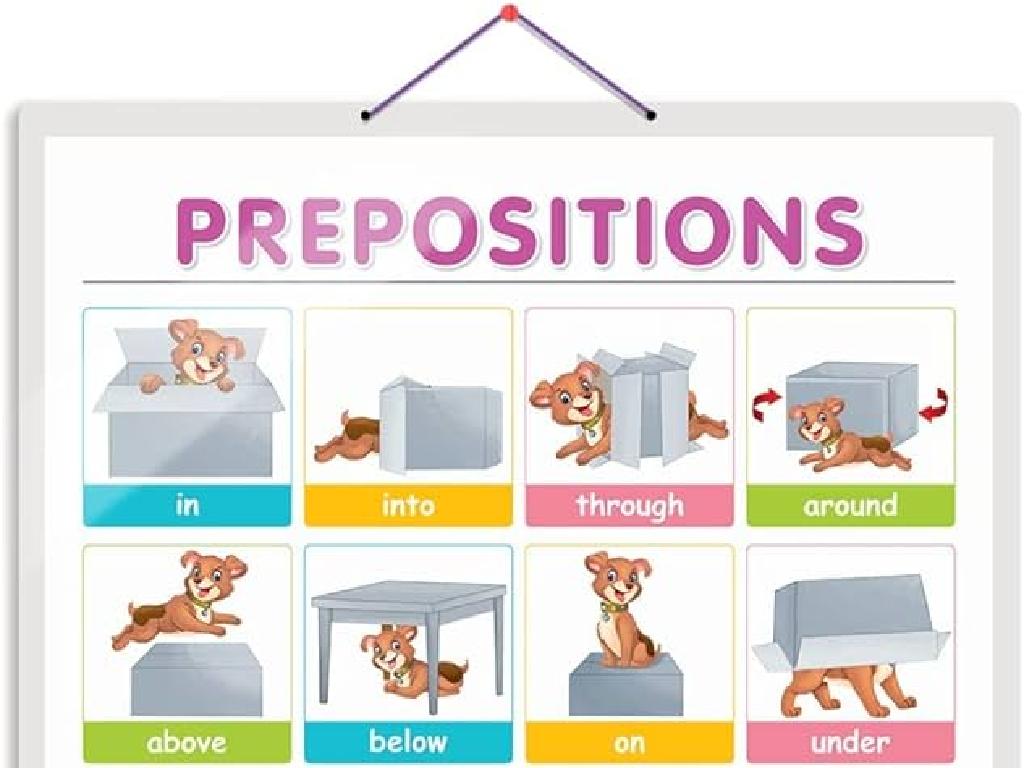The Mongol Empire
Subject: Social studies
Grade: Seventh grade
Topic: Medieval Asia
Please LOG IN to download the presentation. Access is available to registered users only.
View More Content
Exploring The Mongol Empire in Medieval Asia
– Introduction to Medieval Asia
– Overview of The Mongol Empire
– The largest contiguous land empire in history.
– Significance in history
– They connected East and West, shaping trade, culture, and warfare.
– Impacts on culture and trade
– The Silk Road flourished under Mongol rule, enhancing cultural exchange.
|
This slide introduces students to the grandeur of Medieval Asia through the lens of The Mongol Empire. Begin with a brief context setting of Medieval Asia, highlighting the time period and geographical setting. Then, move on to discuss the vastness of The Mongol Empire, emphasizing its status as the largest contiguous land empire in history. Explain the significance of the Mongols in shaping world history, particularly their impact on trade, culture, warfare, and how they facilitated the exchange of goods and ideas along the Silk Road. Encourage students to consider the lasting effects of the Mongol Empire on today’s world, setting the stage for a deeper dive into the specifics of Mongol governance, culture, and their unique way of life.
Rise of the Mongols
– Genghis Khan’s leadership
– Born as Temujin, he became a powerful leader uniting the tribes.
– Unification of Mongol tribes
– Tribes were united under Genghis Khan’s rule, forming a strong empire.
– Innovative military strategies
– Used tactics like feigned retreats and intelligence gathering.
– Extensive Mongol conquests
– Conquered vast areas, creating the largest contiguous land empire.
|
This slide introduces the rise of the Mongol Empire, starting with Genghis Khan’s ascent to power. Genghis Khan, originally named Temujin, was a remarkable leader who managed to unite the warring Mongol tribes through alliances and conquests. His leadership was pivotal in forming what would become the largest contiguous empire in history. The Mongols’ military strategies were advanced for their time, including the use of psychological warfare, superior horseback riding skills, and espionage. Their conquests extended across Asia and into Europe, affecting the course of history. Students should understand the significance of Genghis Khan’s leadership and the Mongol military’s adaptability and strength in warfare.
Expansion of the Mongol Empire
– Mongols’ territorial conquests
– Vast areas including parts of Europe, Asia, and the Middle East.
– Silk Road’s role in expansion
– The Silk Road facilitated movement and control across regions.
– Boost in trade and culture
– Trade flourished, bringing diverse cultures together.
– Mongol influence on Eurasia
– The empire’s reach affected many aspects of life across the continent.
|
This slide aims to illustrate the vastness of the Mongol Empire’s expansion and its profound impact on the world. Emphasize the strategic conquests that allowed the Mongols to control significant territories across Europe and Asia. Discuss the Silk Road’s critical role in not only expanding the empire but also in enhancing trade, which led to an unprecedented cultural exchange. Highlight how the Mongol rule facilitated the movement of goods, ideas, and technologies across different civilizations, shaping the course of history in Eurasia. Encourage students to consider the lasting effects of the Mongol Empire on modern borders, trade routes, and cultural diversity.
Daily Life in the Mongol Empire
– Mongols’ nomadic lifestyle
– They lived in movable yurts, herded animals.
– Social hierarchy and roles
– Included khans, warriors, craftsmen, and herders.
– Daily activities of Mongols
– Herding, training horses, archery, and crafting.
– Mongol contributions to conquered lands
– They promoted trade, arts, and cultural exchange.
|
This slide aims to give students a glimpse into the everyday life of the Mongol people, emphasizing their nomadic culture. Highlight the importance of mobility for the Mongols, who lived in yurts and relied on herding as a primary way of life. Discuss the social structure, which was divided into distinct roles from the ruling khans to warriors and herders. Explain typical daily activities such as herding, horse training, and archery, which were essential for survival and warfare. Lastly, address the positive impacts of Mongol rule in the regions they conquered, such as the facilitation of trade along the Silk Road, and the patronage of arts and cultural exchange. Encourage students to compare and contrast the Mongol lifestyle with their own and to consider the long-term effects of the Mongol Empire on world history.
Governance of The Mongol Empire
– Structure of Mongol governance
– The empire was divided into regions, each with its own governor.
– Mongol laws and justice system
– Yassa code guided laws; strict but fair justice was enforced.
– Religious tolerance in the empire
– Different religions were allowed and respected under Mongol rule.
– Impact on conquered peoples
– Policies influenced culture and daily life in the conquered regions.
|
This slide aims to provide an overview of the governance of the Mongol Empire. Discuss the administrative structure set up by the Mongols, which allowed them to control vast territories efficiently. Highlight the Yassa, the legal code attributed to Genghis Khan, which prescribed severe punishments but also ensured order. Emphasize the Mongols’ progressive stance on religion, allowing people of different faiths to practice freely, which was rare for the time. This tolerance helped them maintain peace in a diverse empire. Lastly, consider the impact of Mongol governance on the cultures and daily lives of those under their rule, which can be a point of discussion for how empires can influence subject peoples.
The Decline of the Mongol Empire
– Reasons for empire fragmentation
– Overextension, rebellions, and internal conflicts led to the fall.
– Impact of Genghis Khan’s death
– Genghis Khan’s death in 1227 created a power vacuum.
– Succession struggles post-Genghis
– Disputes among heirs weakened Mongol unity and strength.
– Lasting impacts on Asia
– Mongol rule influenced trade, culture, and politics in Asia.
|
This slide examines the factors that contributed to the decline of the Mongol Empire. The fragmentation was due to several reasons, including the vastness of the empire which made it difficult to govern, as well as internal strife and rebellion. The death of Genghis Khan left the empire without a strong leader, leading to succession issues as his heirs fought for power. Despite the empire’s decline, the Mongols left a lasting legacy in Asia, influencing trade routes such as the Silk Road, cultural exchanges, and political systems. Encourage students to think about how the Mongol Empire’s history might have been different if they had managed to maintain unity after Genghis Khan’s death.
The Mongol Legacy: Impact on Today’s World
– Mongol influence on modernity
– Their empire connected East and West, influencing global trade and culture.
– Technological & cultural gifts
– Innovations like postal systems and passports, and cultural exchanges.
– Historical view of the Mongol Empire
– How historians assess the vast empire’s role in shaping world history.
– Understanding the Mongol contributions
|
This slide aims to highlight the enduring impact of the Mongol Empire on the modern world. Emphasize the Mongols’ role in connecting distant regions, which facilitated trade and cultural exchange. Discuss their technological contributions, such as the development of a postal system and the concept of passports, which revolutionized communication and travel. Also, touch on the cultural contributions, including the spread of ideas and technologies between Europe and Asia. Provide a balanced historical perspective, acknowledging both the empire’s innovations and its more destructive actions. Encourage students to appreciate the complexity of the Mongol Empire’s legacy and its significance in world history.
Exploring the Mongol Empire: A Role-Play Activity
– Form groups for role-play
– Assign roles: traders, soldiers, leaders
– Act out a Mongol scenario
Imagine daily life, challenges, and interactions.
– Discuss learnings from the activity
Reflect on the perspectives and experiences.
|
This class activity is designed to immerse students in the history of the Mongol Empire through role-play. Divide the class into small groups and assign each a specific role within the empire, such as traders, soldiers, or leaders. Provide each group with a scenario to act out, which could involve trade negotiations, military strategy planning, or leadership decision-making. After the role-play, lead a discussion to help students articulate what they’ve learned about the complexities of the Mongol Empire, the different roles people played, and how those roles interacted with each other. Encourage students to think critically about the historical context and the impact of the Mongols on the world. Possible scenarios for role-play could include a trade mission on the Silk Road, a military campaign planning session, or a council meeting with Genghis Khan.





